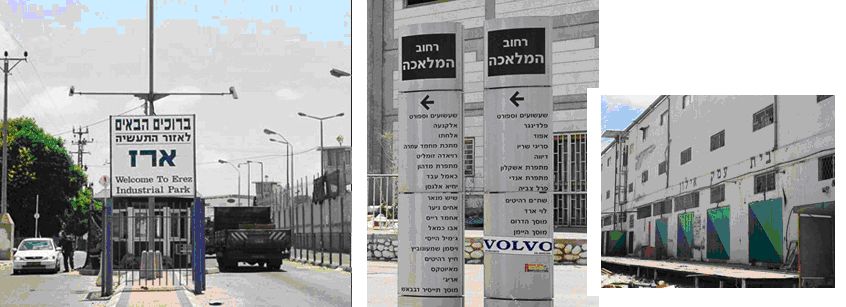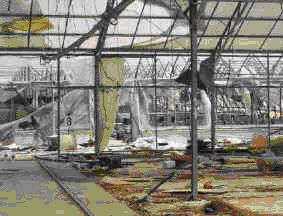The Commission’s recommendation that Israel “lift, immediately and unconditionally, the blockade on Gaza” is highly irresponsible and reflects a dangerous lack of understanding of the Arab-Israel conflict
The report refers persistently but incorrectly to the blockade of Gaza as if it was imposed unilaterally and without reason by Israel alone. (For example clauses 54 and 598). It is therefore extremely important to remind the Commission, and readers of the report, that this repeated claim is FACTUALLY and DAMAGINGLY INCORRECT. Readers are urged to check the accuracy of the following FACTS.
There was no thought of imposing a blockade when Israel withdrew from Gaza in 2005 as Israel believed the withdrawal would lead to peaceful coexistence with Gazans and in fact this was true until 2006 when Hamas (which has been declared a terrorist organization by 7 countries) emerged as victor in the 2006 Palestinian elections. The election was followed by a bloody battle in June 2007 in which Hamas defeated Fatah and began attacks on Israel. As a result of these attacks, not Israel alone but IN COOPERATION WITH THE “THE QUARTET” comprising US, Russia, UN and EU imposed economic sanctions on Gaza, including restrictions on movement. Egypt cooperated in the blockade during the rule of Presidents Mubarak, Morsi and el-Sisi.
The blockade has not been, nor should it be, lifted until Hamas meets the simple conditions imposed by the Quartet namely that it renounce violence against Israel, recognize Israel and honor all previous agreements between Israel and the Palestinian Authority.
Although facts seem to have lost their importance in the media as well as in politics, intellectual honesty and judicial ethics should tweak our interest in checking on the roots of the blockade that generates so much righteous indignation among pseudo human rights NGO”s.
For a start we are reminded that when Israel vacated the Gaza strip in 2005, then PM Ariel Sharon emphasized in his disengagement plan published on May 28, 2004, that Israel was committed to the peace process and the purpose of the plan was to lead to a better security, political, economic and demographic situation. A blockade was furthest from his mind.
In March 2007, Hamas and Fatah formed a Palestinian authority national unity government headed by Ismail Haniya, but in June Hamas took control of Gaza in a vicious cruel battle. According to a Human Rights Watch report of June 13, 2007, armed Palestinian groups committed grave crimes, executing captives, attacking a hospital and violating the most fundamental humanitarian principles, in some cases amounting to war crimes.
“Both Fatah and Hamas military forces summarily executed captives, killed people not involved in hostilities and engaged in gun battles with one another inside and near Palestinian hospitals. Armed Palestinians from Islamic Jihad and the Fatah-affiliated Al-Aqsa Martyrs Brigade used a vehicle with “TV” insignia to attack an Israeli military position on the border with Gaza”.
“Hamas captured Muhammad Swairki, a cook for President Mahmoud Abbas’s presidential guard, and executed him by throwing him to his death, with his hands and legs tied, from a 15-story apartment building in Gaza City. Later that night, Fatah military forces shot and captured Muhammad al-Ra’fati, a Hamas supporter and mosque preacher, and threw him from a Gaza City high-rise apartment building. On Monday, Hamas military forces attacked the home in Beit Lahiya of Jamal Abu al-Jadiyan, a senior Fatah official, captured him, and executed him on the street with multiple gunshots. On Tuesday, there were reports of additional killings of individuals not involved in hostilities”.
According to the Guardian of June 15, 2007
“In scenes reminiscent of Baghdad after the fall of Saddam Hussein, hundreds of people swarmed through the unoccupied house of Fatah strongman Mohammed Dahlan, after his neighborhood fell to Hamas, stripping everything, including windows, doors and flowerpots”.
The following extracts from Sharon”s aforementioned disengagement plan paints a picture of good intentions with sadly negative unintended consequences. Referring to the evacuation of an area in Northern Samaria (Ganim, Kadim, Sa-Nur and Homesh), which few remember, he said this would enable territorial contiguity for Palestinians in Northern Samaria and that Israel would assist the international community in improving the transportation infrastructure in the West Bank to facilitate contiguity of Palestinian transportation, normal life and Palestinian economic and commercial activity in the West Bank.
In Gaza, he said, Israel would transfer industrial, commercial and agricultural facilities to a third, international party for the benefit of the Palestinian population that is not involved in terror.
Regarding International Passage he said that to improve the situation, the hours of operation would be extended. Infrastructure relating to water, electricity, sewage and telecommunications were left in place. And most importantly, the Erez industrial zone was to be transferred to the responsibility of a Palestinian or international party and Israel would explore with Egypt, the possibility of establishing a joint industrial zone on the border of the Gaza Strip, Egypt and Israel.
Because too few opinion makers know about the Erez and other beneficial joint industrial enterprises that then existed and that were offered but were wantonly destroyed, it is worth describing them. Unfortunately very little is known, even by experts on Palestine, about the many cooperative efforts established by Israel that were thwarted by the Palestinian uprising, quite apart from those in the pipeline which were not given the chance to be realized.
Before the second intifada, Israel and the Palestinian Authority cooperated in creating employment opportunities along the “seam-line” between Israel, the West Bank and Gaza. A successful industrial zone was created at Erez which grew to employ about 5,000 workers in some 200 businesses half of which were Palestinian-owned. They produced everything from plastics to car parts and continued to do so even as the Israeli-Palestinian conflict raged. This was part of a larger Gaza Industrial Estate (GIE), slated to provide up to 50,000 jobs. In addition, a joint industrial zone was planned south of Tulkarm intended to provide jobs for more than 5,000 Palestinians. Additional areas were planned for Jenin and the Kerem Shalom area near Rafah in Gaza.
The Erez Industrial Park Photos by courtesy of www.gushkatif.net
But all these positive efforts were unfortunately thwarted. The GIE zone became the target of deadly Palestinian attacks leading to closure of the enterprise. Hamas and the Fatah Al Aqsa Martyrs Brigades claimed joint responsibility.
The tragedy was encapsulated by one of the Palestinian factory owners, 40-year-old Ashur Salha,. “It”s simply stupid,” he told Haaretz,
“Whoever ordered the bombing must have known that 30,000 mouths depend on our employment here. After all, this hurts us [the Palestinians] much more than it does the Israelis.”
Sadly, the golden opportunity for a new prosperous Gaza created by Israel”s disengagement from the strip was rejected. As soon as Israel left Gaza, Gazan gunmen wantonly destroyed thousands of greenhouses and other projects left behind by the Jewish settlers; projects that could have provided income for over 4,500 families. Before the Palestinian uprising, up to 100,000 Palestinians worked in Israel, providing an economic lifeline. Palestinian trucks moved freely on Israel’s roads facilitating the export of thousands of tons of agricultural products from Gaza to Jordan and beyond.
One of the destroyed greenhouses Photo by courtesy of http://www.zionism-israel.com/ezine/gaza_green.htm
Even during times of violence about 5,000 Palestinians continued to work in Israel, and in the settlements that have since been evacuated. Similarly Palestinian businessmen traveled freely and conducted their affairs in Israel.
If peace is to be achieved by negotiation, the question must be asked how this can be done while the Hamas charter declares there is absolutely no room for peaceful negotiation.
Article 13 of the Hamas Charter unambiguously declares:
“Initiatives, and so-called peaceful solutions and international conferences, are in contradiction to the principles of the Islamic Resistance Movement. There is no solution for the Palestinian question except through Jihad. Initiatives, proposals and international conferences are all a waste of time and vain endeavors.”
The cost of acquiring thousands of sophisticated missiles many of which have reached Jerusalem and Tel Aviv as well as constructing hundreds of elaborate steel and cement lined tunnels and the recently revealed drones must be enormous. This raises the question as to how the funds, so generously donated by the EU and the USA for humanitarian purposes are supervised? If these funds had been used for creating businesses, building hospitals and improving infrastructure including sewage treatment and water and electricity supplies, Gaza would be a much happier place.
Taking the above circumstances into account, one must ask who in good conscience can advocate lifting of the blockade before solid long-term security arrangements are made to prevent Hamas from continuing its proven history of accumulating and using sophisticated armaments instead of applying its financial and human resources to constructive purposes?



